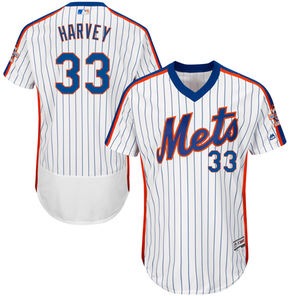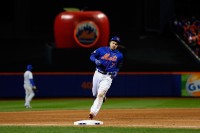
There is no more physically, psychologically, and intellectually demanding position than catcher.
The catcher needs to know the entire scouting report for the opposition at the plate and on the basepaths. The catcher needs to balance a hitter’s strength and weaknesses against his pitcher’s in calling a game. If a pitcher doesn’t have a pitch working, he has to create a new strategy on the fly. When a pitch is thrown, he has to do all he can to make sure the pitch is called a strike. Throughout the game, he has to keep the pitcher’s head in the game. It’s especially tough when the pitcher is getting squeezed.
When his team is up to bat, he needs to talk to the pitcher about the batters coming up the next inning. He needs to talk with the manager and pitching coach not only about that, but also how the pitcher is throwing and what he has left. By the way, at some point, he has to bat 4-4 times in a game to help put some runs on the board for the pitcher.
The catcher faces pitches in the dirt he has to eat up with any part of his body. He will get nicked with a foul tip or an errant swing. Runners try to take him out with a slide, or in very rare instances, he can get run over at home plate. The catcher is bound to have some bumps and bruises or trips to the DL. Even after a tough game, the catcher comes back and does it all tomorrow.
Even though all of this is gust the tip of the iceberg of a catcher’s responsibilities, how do most people judge the effectiveness of a catcher? Their effectiveness in throwing out potential base stealers.
It was the topic in John Harper’s New York Daily News column about Travis d’Arnaud‘s troubles throwing out baserunners in the postseason. Actually, to call it a difficulty is an understatement. Despite being better than league average in throwing out baserunners during the regular season, d’Arnaud struggled mightily in the postseason. Would be basestealers were a perfect 11/11 against him and the Mets pitching staff.
This was a major focus of Harper’s article. For his part, d’Arnaud readily admits that shouldn’t happen, and he says he needs to improve. It was an important enough issue for Terry Collins that he made it a point to take a part in the first throwing drills of Spring Training. There was talk of a need to improve d’Arnaud’s mechanics and the like.
What was overlooked was that of the 11 people who stole a base against the Mets in the postseason, only one scored a run. A big reason why is that d’Arnaud excels in all the other areas of being a catcher.
Since he became the Mets catcher, d’Arnaud has been an excellent pitch framer. Last year, he led the majors in highest percentage of balls being called strikes. When there is a premium being placed on the pitch counts and innings pitched for this young staff, every strike d’Arnaud can steal is crucial. Furthermore, getting strikes called puts a pitcher in an advantageous position. This usually leads to shorter at bats and more outs.
Additionally, there is the subjective element of catching. The pitchers like throwing to him. They feel comfortable while he’s behind the plate. He instills confidence in his staff.
By the way, he’s also a terrific hitter. He was the second best offensive catcher in baseball last year. In the NLCS, he hit a homerun off of the Homerun Apple. d’Arnaud hit it so hard, the apple needed a bandaid.
So overall, d’Arnaud does everything you could ever want your catcher to do. He has the confidence of his pitching staff. He gets the pitches called for strikes. He is a good hitter. Basically, d’Arnaud comes to beat you in multiple ways each and every day. If he struggles for a stretch with throwing out baserunners, there are other parts of his game that overshadow it, that help to prevent that run from scoring.
d’Arnaud may struggle throwing out people again next year. That’s fine. As long as he keeps doing what he’s doing, he will still be a terrific all-around catcher. He will help the Mets return to the postseason and win the World Series.
Editor’s Note: this article first appeared on metsmerizedonline.com

At this point, I’m simply in awe of this Mets team. It’s not the pitching. It’s not the power from the lineup. No, it’s the collection of the fine men they’ve assembled on this team:
Terry Collins stopped practice to have the pitchers meet Ryan Williams who had a heart transplant. #LoveTheMets #LGM pic.twitter.com/S95OLuJRPI
— New York Mets (@Mets) February 23, 2016
Moments like this start with Terry Collins, who has time and time again proven himself to be a good man. Last year, he hand wrote a letter to a grieving family. He celebrated each victory with his team and the fans. Terry Collins gets it, and he makes sure his players get it as well.
In 2016, Terry Collins will drive us crazy with his moves. He will cost the Mets games as he has done in the past. When that happens, I’m going to be upset. I’m going to utter more than a few expletives. I’ll calm down because Terry Collins is the right man to lead this Mets team. He brings the best out of his players both on and off the field.
This is why the Mets stop to pose for a picture with a young fan that just had a life saving operation. It’s why the team does any number of things they do off the field we will never hear mentioned. This team gets it, and they do the right thing.
As Mets fans, we’re lucky to have Terry Collins leading this team.
Editor’s Note: this article first ran on metsmerizedonline.com
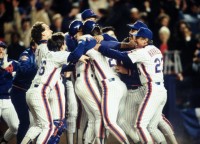
I remember back in 2000, the stories were that Bobby Valentine needed to make the World Series in order to keep his job. The amazing thing is he actually did it.
Just think about everything that had to happen that year for the Mets to make the World Series. First, the Mets had an overhaul of its outfield during the season. On Opening Day, the Mets outfield was, from left to right, Rickey Henderson–Darryl Hamilton–Derek Bell. At the end of the year, it was Benny Agbayani–Jay Payton-Derek Bell. Agbayani was only on the Opening Day roster because MLB allowed the team to have expanded rosters for their opening series in Japan.
On top of that, Todd Zeile was signed to replace John Olerud. Zeile had to become a first baseman after playing third for 10 years. Edgardo Alfonzo had to adapt from moving from the second spot in the lineup to the third spot. The Mets lost Rey Ordonez to injury and first replaced him with Melvin Mora for 96 games before trading him for the light hitting Mike Bordick. More or less, all of these moves worked. Then came the postseason.
A lot happened in the NLDS. After losing Game One, the Mets faced a quasi must win in Game Two. They were leading before Armando Benitez blew a save. I know. I’m shocked too. The Mets regained the lead, and they won the game when John Franco got a borderline third strike call against Barry Bonds. In Game Three, the Mets won on a Agbayani 13th inning walk off homerun. This was followed by Bobby Jones closing out the series on a one-hitter.
The Mets were then fortunate that the Braves lost to the Cardinals in the other NLDS series. The Mets tore through the Cardinals with new leadoff hitter Timo Perez. We saw all that luck run out in the World Series. We watched Zeile’s potential homerun land on top of the fence and bounce back. On the same play, Perez was thrown out at home. In the same game, Benitez blew the save. Unfortunately, there were no more heroics.
We saw this repeated in 2015. The epically bad Mets offense had to have its pitching hold things together until help came. Part of that required the Nationals to underperform while the Mets were fighting tooth and nail just to stay in the race.
In the NLDS, the Mets were on the verge of elimination. They weren’t eliminated because somehow, some way Jacob deGrom pitched six innings with absolutely nothing. The Mets then needed Daniel Murphy to have a game for the ages. He stole a base while no one was looking, and he hit a big homerun. It was part of an amazing run through the postseason for Murphy. Like in 2000, it came to a crashing halt in the World Series.
No matter how good your team is, it takes a lot of luck to win the World Series. Look at the 86 Mets.
In the NLCS, they barely outlasted the Astros. In Game Three, they needed a Lenny Dykstra two run homerun in the bottom of the ninth to win 6-5. In Game Five, Gary Carter hit a walk off single in the 12th to send the Mets back to Houston up 3-2. It was important because they didn’t want to face Mike Scott and his newfound abilities. With that pressure, they rallied from three down in the ninth, blew a 14th inning lead, and nearly blew a three run lead in the 16th inning.
Following this, the Mets quickly fell down 0-2 in the World Series before heading to Boston. After taking 2/3 in Boston, the Mets had to rally in the eighth just to tie Game Six. There are books that can be written not only about the 10th inning, but also Mookie Wilson‘s at bat.
First, they had to have a none on two out rally with each batter getting two strikes against them. For Calvin Schiraldi to even be in the position to meltdown, he had to be traded by the Mets to the Red Sox heading into the 1986 season. In return, the Mets got Bobby Ojeda, who won Game Three and started Game Six. John McNamara removed Schiraldi way too late and brought in Bob Stanley. His “wild pitch” in Mookie’s at bat allowed the tying run to score. You know the rest:
By the way, keep in mind Bill Buckner wasn’t pulled for a defensive replacement. Also, the Mets had to rally late from 3-0 deficit just to tie Game Seven.
We need to keep all of this is mind when setting expectations for the 2016 season. Terry Collins is right when he says World Series title or bust is unfair. We know way too much can happen between now and the World Series. Right now, the only goal should be winning the NL East. If the Mets do that, they have met their reasonable expectations. After that, the Mets are going to need a little luck to win the World Series.
Fortunately, the Mets are carrying a four leaf clover in the form of Matt Harvey, Jacob deGrom, Noah Syndergaard, and Jeurys Familia
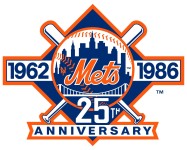
Yesterday, the Mets announced that the Mets will wear the iconic 1986 racing stripe jerseys every Sunday home game this season. I love these jerseys, but it does seem odd that the team is wearing these jerseys each and every Sunday.
The Mets everyday left fielder, Michael Conforto, was born on March 1, 1993. At that time, the only members of the 86 Mets still around were Dwight Gooden and Howard Johnson. Gooden’s Mets career was effectively over at that point. He was a shell of his former self due to drug abuse and injuries. HoJo was only a utility player on the 86 team. The main contribution he made that year was being the on deck batter when Ray Knight scored off of Mookie Wilson‘s little dribbled up the first base line.
It seems odd to me to see Conforto wearing a 25th anniversary patch that was created for a team seven years before he was born.
Again, if the Mets want to do this, they should do it right. Update the patch to commemorate the 30th anniversary of the 1986 World Series championship. This way it truly becomes an homage to the 1986 team that it was intended to be. Furthermore, the jerseys will look more appropriate when you purchase them.
Speaking of purchasing one, which I intend to do, there are two problems with the jerseys. The first is the diaper effect of the jerseys:
The next is if you don’t want the diaper, you don’t get the patch, nor do you get the option to personalize it:
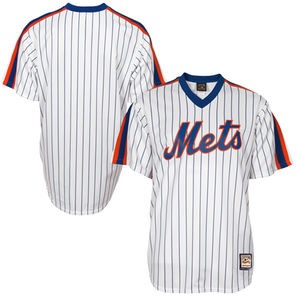
One last note, am I the only one that thinks it’s going to look absurd to see Tim Teufel effectively wearing Darryl Strawberry‘s jersey?
Overall, I love that these jerseys are back. I think the Mets were smart making them the Sunday jerseys. I hope they return in 2017. I just wish they were updated to be the tribute the Mets wanted them to be.
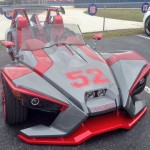
No matter how you slice or dice it, the Mets have gone from an under .500 team to taking over New York in one year. How did they do it?
For starters, the Mets went to the World Series. They went on a magical run and came up just short. Additionally, they have assembled a roster that is more than capable of returning to the World Series this year, but also in years to come. Just as important as all of this, the Mets have a team that is good to the fans. Even after a loss in the World Series, they came out to share the moment with the fans. The fans love this team, and the feelings seem mutual.
One major reason why the fans love the team is the larger than life personalities on the team.
Matt Harvey travels across the talk show circuit like he’s got a movie about to be released even though “The Dark Knight Rises” was released in 2012. No, it’s not a coincidence that the movie was released the year he was first called up to the majors.
After the World Series, Noah Syndergaard took his own victory tour going to each New York stadium letting them know he owned the city. He actively accepts and plays off the Thor superhero moniker bestowed upon him. He knows what everyone thinks about when they think if him, and then he goes about playing along on Twitter:
Spring Training packing checklist:
-glove✔️
-spikes✔️
-mjolnir?✔️
-lunch box ?— Noah Syndergaard (@Noahsyndergaard) February 4, 2016
RT @statcast Your eyes did not deceive you. @Mets starters just throw harder than the rest.https://t.co/tqILsn0vDg pic.twitter.com/cjnAm0Dl6e
— Noah Syndergaard (@Noahsyndergaard) February 4, 2016
By the way, before he came to the majors, he was thought of as the quiet one.
Overall though, no one moves the needle more than Yoenis Cespedes. He’s got swagger. Say what you will about him, but he is just cool. There are people and players that have that aura. Whatever you want to call it, Cespedes had it. Speaking of which, did you see that car?!?!?
This is Yoenis Cespedes's vehicle today. Unreal. pic.twitter.com/oUMz9HNEP5
— Robert Brender (@robertbrender) February 23, 2016
More shots of Cespedes's new three-wheel ride. Mets teammates even came out to see it. pic.twitter.com/29CkA5Srqf
— Andrew Beaton (@andrewlbeaton) February 23, 2016
Harvey has a Maserati, and people don’t even notice it. For what it’s worth, Harvey could’ve driven a Honda Civic today. No one noticed. Do you realize how big of a person or personality you need to be to make people not notice Matt Harvey?
That’s why the Mets own New York. They get it. They accept and return the fans’ love. They have a certain cool about them. They’re confident. They’re fun. They’re awesome on and off the field.
That’s why the Mets own New York.
(Photo from Mets Twitter account)

Today finally felt like baseball is not that far away. Pitchers and Catchers have already reported. The temperature was in the 50’s. And the Mets were playing pepper:
A perfect morning in PSL. ⚾️ #Mets #SpringTraining pic.twitter.com/fcVu9f7a6Z
— New York Mets (@Mets) February 22, 2016
Pepper games bring me back to when I was a kid. Back then, before teams realized they could use the area behind homeplate for advertising, there was a simple notice to everyone at Shea Stadium:
NO PEPPER GAMES
Go back and watch a classic Mets game from the 80’s. The sign is there clear as day. Remember, this was back in a day and age where you could smoke in the stands and grab a beer on the way out of the ballpark. That’s fine as long as you don’t play pepper.
I’m sure there was avoid reason like fan safety, but it doesn’t seem like baseball without pepper games. Whenever you watch a baseball documentary like “When It Was a Game” or Ken Burns’ “Baseball” there was the old black and white footage of players playing pepper.
I still remember playing pepper with my Dad and brother down at the park. I remember doing it at baseball practice. I’m such a baseball nut that when the weather got nice, some friends and I would have a catch and play some pepper. When my son gets older, I plan on doing it with him.
These are the things I look forward to with my son. When the weather gets nice, I want to have a catch with him outside. I want to pitch to him and see that lefty bat in action hitting line drives all over the place. I want to play pepper.
Most of all right now, I’m ready for baseball. The cool Spring days to the warm Summer nights. The cold endless October evenings. Baseball season is upon us. Time to break out the mitts. Time to break out the bats. Time to get that arm warmed up to toss the call around.
I’m ready. I know my son is as well.
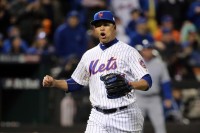
This time of year we get announcements that seem like news. When they’re said, it had to be covered because it is the team making an announcement. For example, when the Arizona Diamondbacks announced Zack Greinke as their Opening Day starter, it was met with a collective eye roll.
I felt the same way when the Mets announced Hansel Robles would most likely make the Opening Day roster.
Of course he is. Robles kept getting better and better last year. In the second half, he pitched 31.1 innings in 31 appearances. He had a 3.16 ERA with a 0.894 WHIP and a 12.1 K/9. He limited batters to a .171/.246/.450 batting line. Over the whole year, he showed an ability to get both righties and lefties out.
The issue isn’t whether Robles will be on the Opening Day roster. It should be what his role should be. Robles should be given the eighth inning.
Right now, that spot is being given to Addison Reed. For his career, Reed has a 4.01 ERA, 1.261 WHIP, and a 9.3 K/9. Like Robles, he is effective against righties and lefties. However, his performance is typically uneven over the course of a year.
The other option is newly signed Antonio Bastardo. In his career, he has a 3.58 ERA, 1.198 WHIP, and an 11.0 K/9. Although he’s a left, he shares Robles’ and Reed’s ability to get both righties and lefties out. The one caution with Bastardo is he seems to be an every other year player. Following his ERAs, his ERA is around 4.00 in even numbered years, and it is under 3.00 in odd numbers years. His ERA+ in those years support the every other year scenario. We’re heading into the 2016 season.
Just judging on the statistics, Robles should pitch the eighth inning. However, 31 appearances is a very small sample size to make such a judgment. It’s even more so when you consider that you’re moving him ahead of two established relievers the Mets are paying quite well. There’s so thing else to consider, Robles has dominating stuff.
Robles repertoire includes a 96 MPH fastball, 87 MPH change, and an 88 MPH slider. Each one of these pitches became more effective as Robles learned how to incorporate the quick pitch. That quick pitch is another reason why Robles should pitch the eighth.
Jeurys Familia also likes to use the quick pitch. It’s come to the point that batters are aware that he’ll do it. They have to come prepared each and ever at bat. Same goes for when Robles is on the mound. The Phillies will tell you that goes doubly for Familia.
However, it’s one thing to prepare for it. It’s a whole other thing to have seen it in an earlier at bat. If Robles comes in during the sixth or seventh inning, he’s bound to use the quick pitch. He needs to use it to be his most effective. Whether or not Familia needs it is a whole other question all together. He likes using it.
A batter having seen the quick pitch in a game is bound to be more prepared for it later in the game. The batter will be most prepared for it when the game is on the line. With that said, why let these batters be better prepared to face Familia’s quick pitch? The Mets shouldn’t. Instead, the Mets should keep Robles and Familia as close together as possible.
Robles has the stuff. He has the results. It’s better for Familia. Robles should pitch the eighth in 2016.
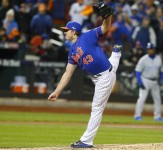
Pitchers and catchers have already reported, and the reporting date for position players is soon approaching. While everyone is settling in, the Mets coaching staff is already trying to plan out the 2016 season:
The Mets have Addison Reed penciled in as the eighth-inning guy to begin the season, according to pitching coach Dan Warthen.
— Mike Puma (@NYPost_Mets) February 20, 2016
Judging on his performance in his limited time with the Mets last year, Addison Reed was lights out. In 17 appearances, he had a 1.17 ERA, a 1.043 WHIP, a 2.74 FIP, an impossibly high 322 ERA+, and a 10.0 K/9. Between his performance, and his history of being an effective closer, Reed is a natural choice to take over eighth inning duties.
However, it should be noted that performance was uncharacteristically good for Reed. In his career, Reed has a 4.01 ERA, 1.261 WHIP, 3.41 FIP, 102 ERA+, and a 9.3 K/9. Accordingly, even if Reed benefitted from working with the Mets coaching staff, he would still be due for a regression back to the numbers he’s accumulated over his five year career. What’s interesting is that looking over Reed’s career, we may be able to see when it’s coming. Here is his ERA and WHIP by each month of his career:
- March/April 2.52 ERA & 1.195 WHIP
- May 4.74 ERA & 1.260 WHIP
- June 5.90 ERA & 1.336 WHIP
- July 3.66 ERA & 1.156 WHIP
- August 2.08 ERA & 1.049 WHIP
- September/October 5.21 ERA & 1.543 WHIP
Reed seems to be at his best at the beginning of the year and after the All Star Break. He tends to wear down after the breaks and with increased use. Last year was an exception. He actually had a very good September. It was perhaps the best month of his career. He had it in a pennant race. He did it with a new team.
So yes, it’s possible that Reed has figured something out, and now, he can be more consistent during the year. He did work on adding a splitter to his repertoire last year. Maybe the Mets were able to help get the most out of him. It’s possible he rose to the challenge that was presented to him. It’s more likely that Reed will put up similar numbers to those he has put up during the majority of his career.
If that’s the case, Reed will start out great and then regress. If that happens, fans should be patient with him. From his career, we can see that he will turn things around. He will be re-energized after the All Star Break. He has shown the ability to pitch well in a pennant race.
Whether or not Reed lasts the year as the eighth inning guy is inconsequential. What matters is that he is effective when it counts most. Judging from his career, 2016 is going to be a bumpy ride. However, fans should be patient with him. He’s shown us that he can produce when it counts most. At the end of the day, that’s all we want.
So with that said, Mets fans should be patient with him. If 2015 is any measure, he will reward that patience.
One of the fun things about Spring Training is the guy who plays so well, he forces his way onto the Opening Day roster.
In 1996, Butch Huskey hit nine homeruns in the Spring forcing the Mets to make him the Opening Day rightfielder even though he never previously played the position. In 2004, Tyler Yates had a 0.64 Spring Training ERA to get the fifth starter’s job. Yates beat out bigger Mets prospects like Aaron Heilman and Grant Roberts.
These players weren’t even darkhorse candidates to win the positions they ultimately attained on the Opening Day roster. Yet, they were able to win their jobs because they were that good in the Spring. More importantly, the Mets had a spot for these players. The Mets were held competitors for these positions, and these players performed so well that the Mets had no choice but to give them the job.
Looking over the 2016 Mets, there’s only one spot up for competition, and that’s in the bullpen. Right now with Jeurys Familia, Addison Reed, Antonio Bastardo, Jerry Blevins, and Hansel Robles, there are two spots up for grab. The names you’re apt to hear are Sean Gilmartin, Logan Verrett, and Erik Goeddel. Each pitched well out of the bullpen last year and deserve consideration.
Another name that deserves consideration is Jim Henderson.
If you don’t recognize the name, it’s understandable. He’s only pitched in 14 games in the majors the last two years due to a shoulder injury and subsequent surgery. Those 14 games were two years ago when he registered a 7.15 ERA. With all that said, Henderson should not be disregarded. He has a legitimate shot at making the Mets Opening Day roster.
Prior to the shoulder injury, Henderson was a very good reliever. Between 2012 and 2013, he made 97 appearances. He had a 2.98 ERA, 1.180 WHIP, 3.03 FIP, 133 ERA+, and 11.9 K/9. He only allowed 0.9 HR/9. In 2013, when the Brewers made him the closer, he recorded 28 saves.
He can help the Mets. Now that he has completed his rehab, he has a fastball that can touch 95 MPH. He knows how to strike guys out. For his career, he has just dominated righties. He has limited them to .183/.241/.284. At a minimum, he can be a specialist to get out tough right handed batters. Ideally, he can be the Chad Bradford to Blevins’ Pedro Feliciano. In order for that to happen, he just needs to get an opportunity.
Fortunately for him, Terry Collins seems like he is going to give Henderson a legitimate shot. As he told Anthony DiComo of MLB.com:
His history is very intriguing. I know he’s a couple of years out of sugery now, which we’re hoping makes a big difference. I saw him inMilwaukee, and he was very, very good. I’m just hoping we can catch lightening in a bottle.
It’s fair to say, Henderson has impressed Collins. It’s half the battle. All Henderson has to do now is go out there and perform this Spring Training. Like Huskey and Yates, he has to dominate in the Spring. He has to give the Mets no choice but to put him on the roster.
Editor’s Note: this article also appeared on metsmerizedonline.com

